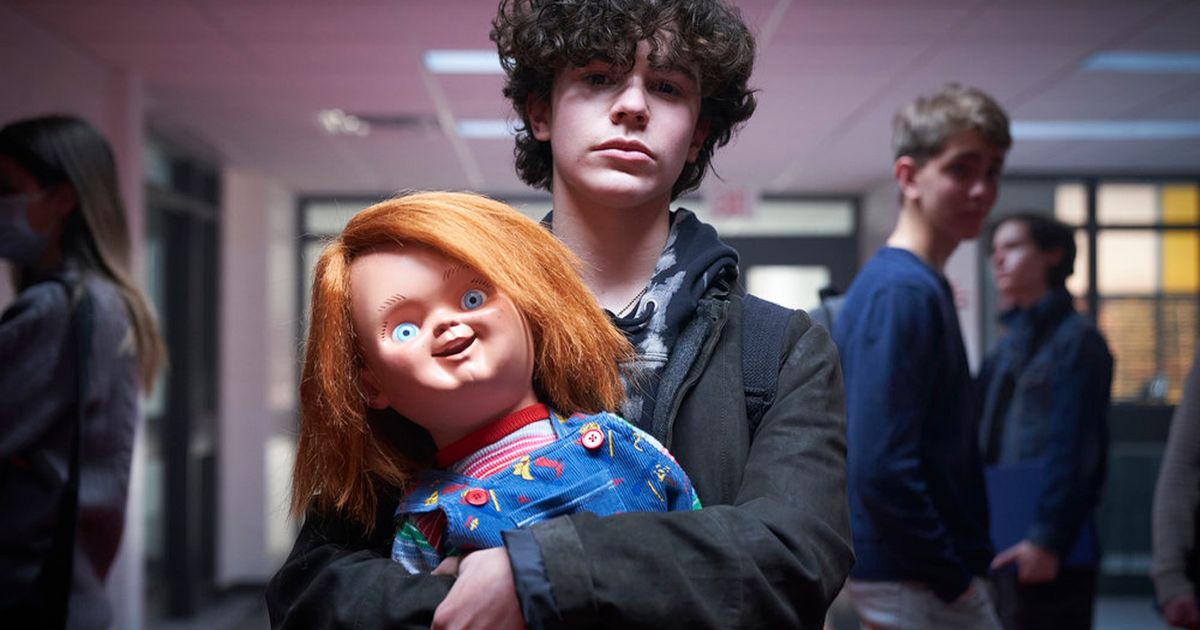
In creator Don Mancini’s original script for 1988’s Child’s Play, Chucky was literally the manifestation of 6-year-old Andy Barclay’s (Alex Vincent) repressed rage.
But the Chucky TV show is the first installment of the Child’s Play series with a gay lead, and the bullying that Chucky is encouraging Jake to stab his way out of is explicitly about Jake’s sexuality.
“You know, I have a queer kid,” Chucky tells him, referencing his gender-fluid offspring Glen/Glenda for the first time since 2004’s Seed of Chucky.
These exchanges bring to the surface the themes at the heart of Chucky: The show is both literally and subtextually about coming out, with Jake working hard to suppress his inner urges.The series links Jake exploring his sexual identity with Jake exploring his killer instincts, but in a 2021 twist, it depicts both without any of the shame that traditionally colors metaphors like this.
When Chucky is encouraging Jake to murder mean girl Lexy (Alyvia Alyn Lind), he warns him to “kill the bitch before she kills you.” Chucky is a coming out story by way of The Velvet Rage.
The allegory reached its pinnacle — or nadir, depending on how you look at it — with 1985’s A Nightmare on Elm Street 2: Freddy’s Revenge, a film that feels like the Chucky TV series’ most obvious influence.
In Freddy’s Revenge, Jesse (Mark Patton) is haunted by Freddy Krueger (Robert Englund), who is trying to take over the teenager’s body to go on a killing spree, or as Jesse puts it in the movie’s double entendre–laden script, “He’s inside me and he wants to take me again!” Like Chucky with Jake, Freddy turns Jesse into a reluctant participant in his carnage.And if there’s any doubt that Mancini is evoking this trope on purpose, one need only look at his work on an earlier entry in the Child’s Play franchise: the campy, critically derided Seed of Chucky.
While the movie never assigns a particular gender identity to Glen/Glenda, Seed is ultimately a coming out story for Chucky’s child, who ends up embracing both their killer instincts and their gender fluidity.
There are moments in Seed of Chucky that knowingly evoke the trans villain trope, down to the climactic reveal of a murderous Glen/Glenda in a wig and a wedding dress.(The doll’s acknowledgment of Glen/Glenda on Chucky shows just how much he’s evolved.) Mancini — who wrote and made his directorial debut on Seed — knows exactly what he’s doing here, diving headfirst into problematic waters for a reimagining of a queer-phobic allegory.
Seed confounded critics and audiences when it was released in 2004 — not to mention the studio executives who called it “too gay,” per Mancini’s recollection — but the Chucky TV series is arriving in an era of broader queer representation in entertainment.Chucky recontextualizes the metaphor of films like Freddy’s Revenge, and writes a new story where queerness is something to be championed rather than feared.
